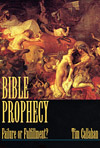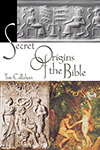In this week’s eSkeptic:

NEW ON SKEPTICBLOG.ORG
Shermer in Seminary School
In this week’s Skepticblog, Michael Shermer recounts his experience presenting arguments on the question of “Is There Life After Death?” in a debate with theologian Gary Habermas that took place on Friday, April 13, 2012 in the chapel of the New Orleans Baptist Seminary.
Lecture at Caltech this Sunday:
Dr. Leonard Mlodinow

Subliminal: How Your Unconscious Mind Rules Your Behavior
with Dr. Leonard Mlodinow
Sunday, April 29, 2012 at 2 pm
Baxter Lecture Hall
FROM THE BEST-SELLING AUTHOR of The Drunkard’s Walk and coauthor of The Grand Design (with Stephen Hawking) and War of the Worldviews (with Deepak Chopra) comes a fascinating, illuminating examination of the profound ways in which the unconscious mind shapes our lives. Every aspect of our mental lives plays out in two versions: one conscious, which we are constantly aware of, and the other unconscious, which remains hidden from us. Over the past two decades researchers have developed remarkable new tools for probing the unconscious, or subliminal, workings of the mind. This explosion of research has led to a sea change in our understanding of how the mind affects the way we live. As a result, scientists are becoming increasingly convinced that how we experience the world—our perception, behavior, memory, and social judgment—is largely driven by the mind’s subliminal processes and not by the conscious ones, as we have long believed.
TICKETS are first come, first served at the door. Seating is limited. $8 for Skeptics Society members and the JPL/Caltech community, $10 for nonmembers. Your admission fee is a donation that pays for our lecture expenses.
Followed by…
Consciousness: Confessions of a Romantic Reductionist
with Dr. Christof Koch, Sunday, May 13, 2012 at 2 pm
Baxter Lecture Hall, Caltech, Pasadena, CA

Skepticality

Interviews with Ian Harris
and Bob Carroll
This week on Skepticality, Derek talks to Ian Harris, one of a troupe of comedians whose “Evolution of Comedy Tour” covers topics science-loving folks will really enjoy. Ian and Derek discuss why comedy is a great fit for talking about skeptical and scientific issues. Later in this episode, Derek checks in with Bob Carroll to discuss his new e-book, Unnatural Acts, which he produced as part his ongoing efforts on The Skeptic’s Dictionary.
MonsterTalk

Onan the Jar Burying
In modern science the homunculus refers to various models of the human mind, but in medieval times it was something quite different. Join us for a fascinating interview with professor William R. Newman, of Indiana University’s Department of History and Philosophy of Science. He is the author of seven books, including Promethean Ambitions: Alchemy and the Quest to Perfect Nature—a book which provides much insight into the seedy back-story of this strange creature.
This episode contains adult material and may be unsuitable for junior skeptics.
About this week’s eSkeptic
In this week’s eSkeptic, Skeptic magazine’s religion editor demonstrates how the Christian apologetic argument of creation ex nihilo (that God created the universe out of nothing), is not dissimilar to earlier creation myths.
The Genesis creation myth
is not unique
by Tim Callahan
The Skeptics Society Great Debate on Sunday, March 25, “Has Science Refuted Religion?,” (watch it for free on skeptic.com) featured physicist Sean Carroll and Skeptic publisher Michael Shermer debating physicist Ian Hutchinson and conservative author Dinesh D’Souza. At one point Ian Hutchinson fished out an old chestnut of an argument, one often used by Christian apologists, that, to my mind, has too long gone without rebuttal. He stated that, of all the ancient creation myths only Genesis 1 features a transcendent deity who created the universe out of nothing and is independent of it. The argument, which Dinesh D’Souza also used in his 2007 book, What’s So Great About Christianity, is basically this: According to Big Bang cosmology the universe was created seemingly out of nothing 13.7 billion years ago; Genesis 1, featuring a god that created the universe ex nihilo (out of nothing) is compatible with modern physics; and, in featuring a transcendent god—as opposed to gods who themselves rose out of a watery abyss and therefore did not transcend the physical world—is unique among all the ancient creation myths. This Christian apologetic argument, known as creation ex nihilo, is obscure enough that scientists and others debating Christian apologists are often baffled by it and without a reasonable rebuttal.
In reality, the doctrine of creation ex nihilo is based on substance so gossamer thin that it’s surprising it can be seen to support such an edifice of theology. In fact, the entire argument rests on a single Bible verse, namely Genesis 1:1: “In the beginning God created the heavens and the earth.” It is only because the verse neglects to say out of what God made the heavens and the earth that one can assume he made it out of nothing. Beyond being based on a single Bible verse, the doctrine of creation ex nihilo and the argument, voiced by both Hutchinson and D’Souza, for the unique nature of the transcendent God of Genesis and the compatibility of Genesis 1 with the Big Bang, are unsustainable, not only in regards to physics and biblical interpretation, but most especially when Genesis 1 is compared to other, earlier creation myths.
Does the Big Bang theory in fact claim creation ex nihilo? Consider the 2012 book A Universe From Nothing by physicist Lawrence Krauss.1 It seems that the “nothing” out of which material universes rise is, in fact, a quantum field: a nothing that really is a something. Without becoming ensnared in the abstruse discipline of cosmology, about which most of us, myself included, are profoundly ignorant, I might observe that the quantum field can be metaphorically related to the primeval chaos out of which first things emerge in many creation myths. That metaphor notwithstanding, I will, however, refrain from making the quantum field an argument for the validity of neo-pagan theology.
A particular weakness of the argument for creation ex nihilo is that it demands a rigorous, one to one, translation of a single Hebrew word in Genesis 1:1, bara, when its proponents should know that the definition of Hebrew words is often complicated because they have multiple meanings dependent on context. Bara not can not only mean “create,” but as well, “choose,” or “divide,” among other meanings. According to one Old Testament scholar, Professor Ellen van Wolde, in the context of Genesis 1 bara should be translated as “separate.” Thus, Genesis 1:1 should be translated, “In the beginning God separated the heavens and the earth.2 This fits the context of Genesis 1, in which the creation is presented as a series of separations: light is created and separated from darkness, the firmament of heaven is created to separate the waters above it from the waters below it, and the separation of land from water. This is followed by a series of creation events populating the separated realms—the land populated with plants, the firmament populated with heavenly bodies, the sea populated with fish and sea monsters, the air with birds, and the land, again, with animals—followed finally by the creation of humans in the image of God.
Another blow to the uniqueness of Genesis 1 is that it is almost certainly based on the sequence of creation events in Enuma elish, the Babylonian creation epic. In this story, after killing the chaos dragon Ti’amat, Marduk slices her body in half lengthwise, top to bottom, using the top half to created the firmament of heaven, separating the waters above from the waters below, and using the bottom half to create land separate from the waters below.3 Before Marduk had killed her, Ti’amat ruled over a chaotic, formless void, much like the initial state of creation in Genesis 1:2: “And the earth was without form, and void, and darkness was on the face of the deep. And the spirit of God moved upon the face of the waters.”
The Hebrew word for the deep is tehom. In its feminine plural form, tehomot, “deeps,” it is cognate with the Akkadian, Ti’amat. Of course, Genesis 1 does not begin with a divine combat. That its author edited out an original combat between Yahweh and a chaos dragon can be seen from the many allusions to such a battle, with a serpent variously referred to as Leviathan and Rahab, salted throughout the Hebrew Scriptures. Consider the following:
Psalms 74:13, 14: Thou didst divide the sea by thy might. Thou didst break the heads of the dragons of the waters. Thou didst crush the heads of Leviathan. Thou didst give him as food for the creatures of the wilderness.
Psalms 89:10a: Thou didst crush Rahab like a carcass
Isaiah 51:9b: Was it not thou that didst cut Rahab in pieces, that didst pierce the dragon?
However, Christian apologists could easily argue that the similarities between Enuma elish and Genesis 1 are only coincidental and that Professor van Wolde is wrong in her interpretation of the verb bara. If, for the sake of argument, we accept that Genesis 1 clearly argues for creation ex nihilo, doesn’t that mean that it is unique among the many creation myths of the ancient world? In a word, no. While most of the Egyptian creation myths (there are several) begin with a creator deity rising from Nun, the watery abyss, there are a number of Egyptian papyri antedating the P Document creation story of Genesis 1—probably written no earlier than ca. 750 BCE—in which creation is presented as ex nihilo. One of these is the Papyrus of Princess Nesi Khensu, daughter of a priest-king of Thebes ca. 950 BCE, in which the god Amen Ra is conflated with the god Khepera or Khepri. The god is described as:4
…the lord of space, the mighty one of the form of Khepera, who came into existence in the form of Khepera, the lord of the form of Khepera; when he came into being nothing existed except himself.
An even earlier papyrus, the Papyrus Hunefur, now in the British Museum and dating from the 19th dynasty ca. 1285 BCE, referring to the God Ra, states:5
Thou art the one god who came into being in the beginning of time. Thou didst create the earth, Thou didst fashion man. Thou didst make the watery abyss of the sky [i.e. Nut]. Thou didst form Hapi [i.e. the Nile]. Thou didst create the great deep…
At this point, Christian apologists are likely to point out that the translations of Egyptian material by E.A. Wallis Budge are outdated and possibly faulty. However, in a more up to date translation of another text, a hymn to the god Ptah in the Papyrus Harris I, written during the reign of Ramesses III (1182–1151 BCE), also speaks of a transcendent god:6
Greetings to you exalted ancient one,
O Tatenen [Ptah] father of the gods,
Eldest god of the primeval time,
who shaped mankind and formed the gods,
Who began Becoming, is the first primeval god—
every event that occurred came after him.
Who created the sky according to what his heart imagined
and raised it like a feather
Who founded the world as his own creation,
circled it about with Ocean and the Great Green Sea
Who made the underworld, province for the dead
allowing Ra o sail across below to comfort them
Ruler of Eternity forever.
That Ptah is credited here with creating the sky and the sea, the two abysses from which the gods emerge, demonstrates that Ptah, in this hymn, was seen as independent of the abyss. This is reinforced a few lines down from those quoted above when Ptah is hailed as: “Who created the offerings for all the gods when he embodied himself as Nun, the primeval chaos.”7 Since, in those Egyptian creation stories in which the gods do rise out of the primordial chaos, that chaos or watery abyss is Nun, Ptah, by embodying himself as Nun becomes transcendent.
It was under Ramesses III that Bronze Age Egypt experienced its final hurrah, garrisoning troops in Canaan for the last time. Thus, even before the semi-legendary period depicted in the Book of Judges, when a tribal confederacy worshiping a henotheistic deity named Yahweh, was still competing for space with a host of other tribal groups, the already ancient civilization of Egypt had conceived of a transcendent god over all other gods, and this was not the God of the Bible.
Besides the Egyptians, the ancient Hindus also envisioned a creation ex nihilo, well before the P document was written. The Indian Rig Veda has been dated anywhere from ca. 1400 to ca. 1000 BCE. It asks:
If in the beginning there was neither Being nor Non-Being, neither air nor sky what was there? Who or what oversaw it? What was it when there was no darkness, light, life or death? We can only say that there was the One that which breathed of itself deep in the void, that which was heat and became desire and the germ of spirit.8
In fact, according to David Leeming, author of Creation Myths of the World, creation ex nihilo is about as common as creation from a pre-existing watery chaos.9
Thus, the God of the Bible was far from unique in creating ex nihilo, if indeed his Jewish creators even cared about such a theological fine point. He did not suddenly appear, transcendent, universal and alone, in stark contrast to a host of crudely conceived idols, gods of wood and stone, as the Bible presents it. Rather, his development was gradual and the concept of him as an eventually monotheistic, universal deity borrowed heavily from cultures that were old when Israel was young.
References
- Krauss, Lawrence. A Universe from Nothing. New York: Free Press.
- Alleyne, Richard. 2009. 2009. “God is not the Creator, claims academic” The Telegraph (U.K.) October 8.
- I document this in: Callahan, Tim. 2002. Secret Origins of the Bible. Millennium Press, p. 37.
- Wallis Budge, A. E. 1900 (republished in 1991). Egyptian Religion. New York: Carol Publishing Group, 131.
- Ibid., 49.
- Foster, John L., (translator) 1995. (ed. Susan T. Hollis). Hymns, Prayers and Songs: An Anthology of Ancient Egyptian Lyric Poetry. Atlanta: Scholars Press, 109.
- Ibid.
- Leeming, David Adams. 2010. Creation Myths of the World. (2nd ed). Santa Barbara, CA: ABC CLIO, 3.
- Ibid., 2–9.
Skeptical perspectives by Tim Callahan…
-
 Bible Prophecy: Failure or Fulfillment?
Bible Prophecy: Failure or Fulfillment?
by Tim Callahan
-
 Secret Origins of the Bible
Secret Origins of the Bible
by Tim Callahan










